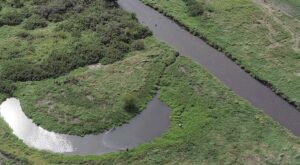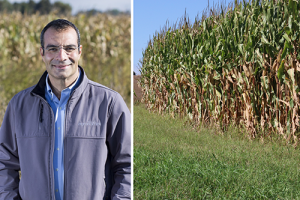By: 4R Plus
March 2019
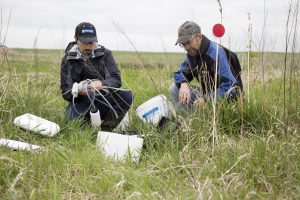
Edge-of-field practices provide farmers with immediate gratification because the benefits are quickly measurable. These practices are catching on across the Iowa landscape with the help of cost-share programs, says Keegan Kult, executive director of the Agricultural Drainage Management Coalition (ADMC).
Conservation drainage practices, like saturated buffer strips and bioreactors, are effective because they reduce nutrient transport from tile-drained systems and can be used in combination with other conservation practices, like cover crops and reduced-tillage practices. “Farmers can instantly see how effective the bioreactor is in reducing nitrates because the water coming from the field into the bioreactor can be compared to the water after it’s treated by the woodchips,” said Kult.
A saturated buffer system diverts the flow of tile water from the outlet to the lateral distribution line that runs parallel to the buffer. As the buffer becomes saturated, the organic matter in the soil leads to nutrients being removed before the water heads downstream.
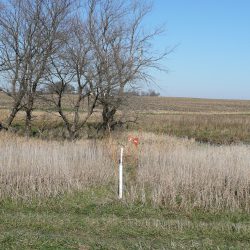
“In Iowa, there are upwards to 100,000 potential sites for saturated buffers that would treat 21 percent of the tile-drained land,” said Kult. “That would result in a 5 to 10 percent reduction in the nitrate load alone, which is a significant benefit from just one practice.”
Kult encourages farmers to learn more about edge-of-field practices by attending field days and visiting their Natural Resources Conservation Service (NRCS) or Soil Water Conservation District (SWCD) office. “The folks in these offices can help you determine which practices would be beneficial in reducing nutrients from tile-drained fields and help you apply for cost-share programs,” he said.
Lee Tesdell, a fifth-generation farmer in Polk County, said cost-share programs covered the majority of the funds needed to install a bioreactor and saturated buffer on his land, which is adjacent to a tile-drained field owned by his neighbor. “I am actually denitrifying my neighbor’s tile water because I take water quality very seriously,” he said.
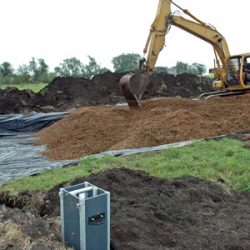
Tesdell has five years of results from the bioreactor, which is denitrifying the water that comes into the structure at a rate of 53 percent. He has one year of data from the saturated buffer, and it denitrified at a rate of 91 percent. “We all live in a watershed and we need to take responsibility for the quality of the water,” he said. “Advancements in technology provide new ways to care for the soil and water. I take advantage of those advancements to leave a legacy for my children and grandchildren.”
A key focus of ADMC, says Kult, is to educate conservation contractors about edge-of-field practices. “We want contractors to be informed so they can pass the information to farmers and tell them about cost-share programs to speed adoption of these effective tools,” he said.
ADMC was instrumental in edge-of-field practices becoming eligible for cost-share funds when installed on Conservation Reserve Program (CRP) acres. The coalition was able to achieve this through a Conservation Innovation Grant from the NRCS. “This is an example of why I am proud of the work our group is doing. We are finding ways to make it simpler for landowners to improve water quality,” said Kult.

